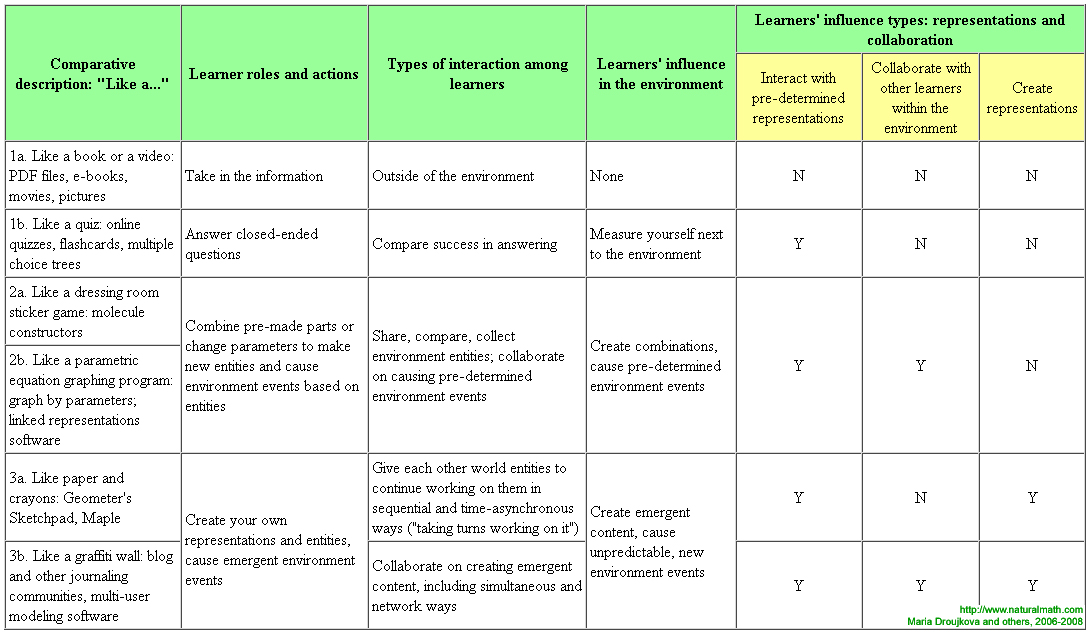User:MariaDroujkova/UserPower
From WikiEducator
User power in virtual environments
Discussion notes from past presentations:
- The term "representations" here is broadly defined as "an entity that stands for something else." For example, a picture of a car may represent a car, or the idea of the fast movement. Everything and anything can be a representation.
- There is an issue of posing your own problems vs. solving other people's problems. It is not reflected in the table above. While creating your own representation is always a novel problem, not every problem posing involves new representations. Should there be a fourth column under learner influence types, for "pose your own problems"? If so, is it 1-N, 2a-N, 2b-Y, 3-Y?
- We are really dealing with a spectrum here instead of three distinct categories. The question of boundaries between categories, under this "spectrum" model, becomes less relevant.
- Abstract vs. concrete: the third category, where learners are actively "messing" with the environment, like a child with a box of crayons, is most promising for concrete, hands-on work. The first category requires most abstract learning skills of the learner.
- Ease of design. The first category is the easiest to design; the second and the third categories are harder and take much more thought and work on the part of developers.
- What are relationships between this taxonomy and some other taxonomies, such as Bloom's? What would Piaget and Vygotski say?
- Learning a language (as a baby or as an immigrant) is a good example for going through all classes in the taxonomy and seeing their effect on the learner. The example works well because everybody knows a language, and language is a complex enough area to be comparable to any other learning objective.
